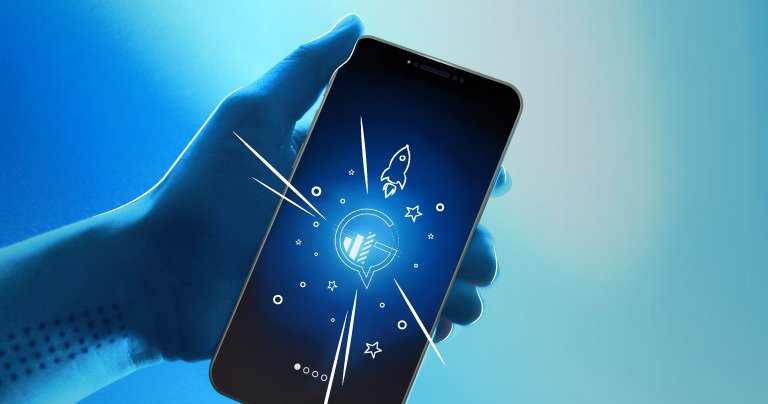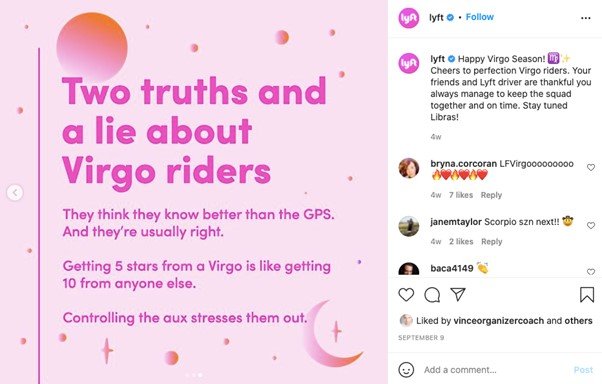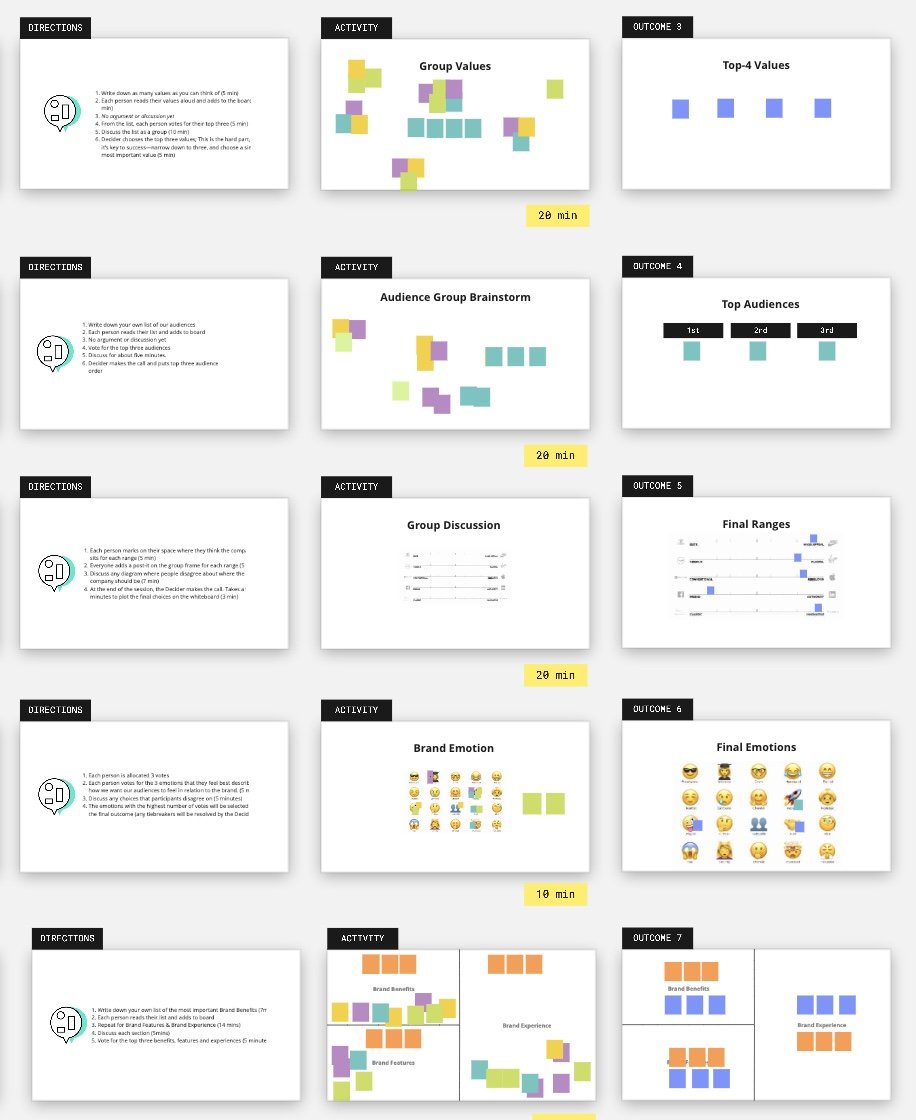
Let’s cut to the chase – if you own a tech startup, you need help with branding.
Don’t take it personally. This is the reality.
The SaaS and tech industry is growing exponentially – with European SaaS companies expected to bring in over €37 billion by 2025.
And in the chaos of exponential growth, tech companies like yours are under more pressure than any other industry to stand out from the crowd and demonstrate value to customers.
So, how do you do that?
With oustanding tech branding – a clever name, a stunning logo, a powerful brand voice, a dynamic website, a sharp set of brand assets.
We happen to know a lot about branding in the tech industry – and we get a real kick out of finding the best and worst examples out there.
Here’s what to expect:
- 5 Examples of Tech Branding Done Right
- 3 Tech Branding Fails
So take a look at these leaders and losers of tech branding and see what you think.
5 Examples of Tech Branding Done Right
1. Brand Name – Toggl
Toggl’s branding in one word? FUN.
Look at the delightful combination of pastel colours on their website.
It makes you feel like you’re eight years old, whizzing through a theme park with pockets full of candy and a peaking sugar high.

Toggl’s branding breaks through tech industry norms to show the magic in mundane tasks like time-tracking for the benefit of their customers – who use Toggl to be more productive and organised.
And we think the cherry on top for Toggl’s branding is all in its name.
Go on, say it out loud.
Toggl.
It’s fun, right?
But… why?
Maybe because it’s a bit of a made-up word (in terms of the spelling) and 72% of the best brand names are made-up words or acronyms.
But it’s more than that – and this is where tech companies can learn a thing or two from Toggl about brand identity.
- Simple
- Easy to pronounce
- Evocative
Those three things are even more crucial for tech branding. Here’s why.
1. A brand name must be simple.
Most of the time, tech founders and marketers are so caught up in the jargon and complex features of their product that they lose sight of the humanity behind why customers love it.
They come to the table with names that are too literal, too complex, or just plain boring.
If Toggl didn’t have training and support from a team of branding experts, it might be called something awful like “TrackMate” or “EasyTrack” or “TimeKeeper”.
Toggl works because it’s a stupidly simple word that everyone recognises.
2. A brand name must be easy to pronounce.
This really should be obvious, but brands shouldn’t have hard-to-pronounce names.
(Unless your brand is a bit snobby, like this upmarket New Zealand furniture company with an Italian name that few New Zealanders can pronounce unless they have a second home in Milan, in which case they’re the desired target audience because they can actually afford the products – then the tactic works well.)
In the saturated SaaS and Tech industry, hard-to-pronounce brand names go straight in the bin.
3. A brand name must be evocative.
Evocative means it triggers a response in your audience. And when we associate words with emotions and memories, we’re more likely to remember them.
Toggl nails this.
How? Well, we have a theory….
What makes a word memorable?
monogamous means something a bit different here. Well, kind of.
Words like “forum” and “set” have relationships with several different meanings. Like the naughty homonyms they are.
But heteronyms like “toggle” have just one meaning. Toggle means switching between one function and another.
(Well, there’s also the weird jacket button, that’s another meaning, but just something on the side. It means nothing, honey, I promise!)
And that might be why Toggl is so memorable as a tech brand.
The word means basically one thing, and that meaning directly aligns with Toggl’s products – switching effortlessly between work, time management, organisation, and hiring.
Okay, we went down a bit of a rabbit hole there. Still with us? Onto brandmarks and logos.
2. Logo – Melabis
Logos are the beacon of brand awareness.
We’ve all seen that damning video where American kids instantly recognise Wendy’s and McDonalds but can’t figure out who the bearded man is (it’s literally Jesus).
A brandmark or logo is what most people think of when they think of ‘branding’.
It’s also where most tech brands hit a crossroads.
Most go right.
They settle for something unoriginal and soul-destroying but oh, so *safe*.
Like the first letter of their brand written in blue font, or just the whole business name in lowercase with a fullstop.
Together, they intensify the saturation of SaaS and tech brands that make us all so, so confused when trying to find the right solution.
Melabis went left.
A trailblazer of the cannabis industry, Melabis offers cutting-edge tech innovation to help governments across the globe to research, cultivate, and process the best cannabis products.
But, even the cannabis market is saturated.
And for a sophisticated tech brand like Melabis, it was essential to set themselves apart from the overused leaf emblem.
You know, the one used by hundreds of cannabis brands that “were gonna make an original logo, but then they got high, then they got high, then they got hiiiiigh.”
As a business and government-facing company, Melabis needed to present a more sophisticated image.
They invested in branding experts (*ahem*) to help them stand out from the crowd and challenge industry norms with a brandmark that’s bold, simple, and oh, so *sexy*.
Our design team took inspiration from the chemical structure of CBD to create this stunning logo:

Here’s how the logo demonstrates the best of tech branding:
| Essential Components of a Logo | Why It Matters | Melabis Logo |
| Simplicity | Simple logos are far more memorable but also easier to reproduce on branded collateral like signage. | Manages to convey meaning with minimal lines and complexity. |
| Colour | Colour psychology tells brands to use specific colours that evoke appropriate emotions and responses from their audience. | Green is a no-brainer for a cannabis company. Melabis uses a clever combination of electric light green and deep dark green. This combines associations of energy and motivation with calmness and nature. |
| Appropriate shape |
People associate certain shapes with different meanings. For example:
|
A combination of edges and geometry within a circle evokes wholeness and security – with a daring edge. |
| Meaning | The logo derives meaning from the tech brand’s identity – not the other way around. | Melabis’ brand colours, shape, and iconography seamlessly align with a brand personality that is innovative, leading, clever, and powerful. |
| Font | Serif fonts have embellishments that evoke elegance, tradition, and luxury. Sans serif fonts are simpler, bolder, and more modern. | Melabis’ logo uses capitalised sans serif font. It’s bold and easy to read. The edges are bevelled, making the logo clean but also slightly disruptive. |
So. basically, the Melabis logo goes hard. After all, it was built by experts ?.
3. Brand Voice – Lyft
Tech branding is so much more than visuals.
A brand is also a personality. A character. A *vibe* if you will.
Then it’s about showcasing your brand voice consistently across every form of messaging.
That includes:
- Website copy
- Blogs
- Logo and colour scheme
- Images
- Social media posts
- Marketing collateral (infographics, banners, signage, etc.)
Because, in a world where people spend 5-6 hours on average on their smartphones, they’ll be seeing your brand on every channel – and they need to like what they see.
And here’s where it gets really easy to separate crap tech branding from companies who actually get it.
Rubbish tech branding tries to appeal to everyone with a bland brand voice. (Haha, try and say bland brand ten times)
And what happens when you try to please everyone? You have no identity and no friends.
?
The best tech branding isolates the target audience, builds a brand voice around it, then amplifies it on every marketing channel.
Will some people be isolated? Will some people miss the joke? Will some people be *gasp* offended?
Yep. And that’s good.
Because the target audience, the people who actually matter, will LOVE IT.
Enter Lyft.
Lyft figured out that millennials are the ride-share generation.
They crafted a brand voice that is so beautifully (and, sometimes, painfully) self-aware, capturing what it means to be a millennial in a post-pandemic world.
Check out these examples (if you happen to be a millennial, you’ll love them):
1. Calling out social awkwardness on Twitter
Nothing says ‘millennial’ like social awkwardness and not knowing how to make an exit.
Lyft gets it:

2. Taking user-focused website copy to the max
Whoever wrote Lyft’s website copy is both a millennial and a genius.
This snippet perfectly captures the priorities, attitudes, and activities of a generation that is grasping for normality after months in lockdown.

3. Making valuable, relevant, and entertaining astrology content
Why are millennials so into astrology?
Maybe it’s the social instability. Maybe it’s the desperation to feel special. Maybe it was all those participation certificates at school.
Either way, millennials are hooked on horoscopes – and Lyft knows it.
But this star-sign related content is far from half-arsed. These Instagram posts perfectly contextualise star-sign descriptions to the ride-share generation.
And I can’t help wondering what the Scorpio one will say…

When it comes to brand voice, Lyft ? understood ? the ? assignment.
And it’s easily one of the finest examples of tech branding we’ve ever seen.
4. Web Design – Shepper
After the logo, web design probably comes second in the “most obvious components of branding” competition.
Every tech company and its chatbot knows that it’s crucial to have a sexy website.
It should be common knowledge that people judge a website in like half a second before deciding to stay or go.
- High resolution font and images
- On-brand colour scheme
- Balance between whitespace and copy
- Decent UX
- Responsive to every screen
They wouldn’t be a successful tech company if they didn’t follow the basic rules of web design.
But your tech website should do more than just cover the bases and follow best practices.
It needs to bring some spice to the table. Something original, fun, valuable and – above all – on-brand.
How else are you going to stand out from the plethora of bland bullshit that’s out there?
Take a look at Shepper’s home page.

At first glance, it does everything a SaaS website should:
- Clear value proposition
- Image of the product in-use
- Balance of whitespace
- Consistent colour scheme
- On-brand demo video
- Clear feature/benefits
This doesn’t make it special, it means it makes the cut.
But Shepper goes a step further with creative animation and a brand identity that’s quite literally warm and fuzzy.
Not what you’d expect from as rigid an industry as asset reporting tools *shudder*.
Let’s talk about creative animation.
At first glance, animated flourishes don’t seem functional at all. They’re decorative. They enhance the experience, but that’s about it.
Except that’s not the case with Shepper’s home page.
The hero section features a clever animated function where the H1 flicks through the product’s use cases – advertising, properties, products, assets – in different colours.
As the use cases change, the image on the right also changes to images and colours that correspond with the specific use case.
It’s such a clever technique that:
a) Looks super pretty and satisfying from a design and tech branding perspective
b) Is relevant and valuable to users who don’t even have to scroll to see how the product is valuable to them
Nice.
Now onto the brand identity that’s woven through Shepper’s website.
One thing about tech branding on websites is that so many companies take a half-arsed approach to their brand story.
Don’t get me wrong, a lot of tech companies recognise that if customers like their brand story, 55% of them will buy the product – and that’s awesome.
But what sucks is the way so many tech brands lazily create an emblem, mascot, or story that feels forced and cringey.

Where’s the consistency? Where’s the authenticity?
That’s where Shepper gets it right with their delightful fuzzy mascot, Sheppy.

I don’t care how relevant Sheppy is to the industry or the product, he’s darn cute.
He’s a beautifully designed sheep-looking representation of Shepper’s clients that they look after.
He doesn’t just show up randomly on the about page as an afterthought. He’s cleverly placed throughout the website, making the brand identity cohesive and believable.
I mean, it’s all subjective, but I’m in.
5. Assets – Latana
When was the last time you used a stock photo on something for your tech brand?
Be honest. It’s okay if you did. But you’re not going to do that anymore. Here’s why.
See this photo?

It’s literally the most used stock image of 2018.
I reckon I’ve seen it at least 2349 times on business blogs, websites, LinkedIn posts, and brochures.
Could I tell you what specific businesses used it? Nope.
And that’s why you need branded assets.
Stock images have their place. But if you want to do tech branding right, you need to have branded assets to show audiences that they should take you seriously.
- Business cards
- Pens
- Mugs
- Hoodies
- License plates
- Mouse mats
Those things still exist, but they’re not exactly modern. Especially when most people work from home.
Today’s brand assets are digital. They’re your:
- Social media templates
- Infographics
- Blog images
- LinkedIn banners
What sucks about most tech branding assets is that they’re often an afterthought.
Tech marketers finish editing an epic blog, maybe their pièce de résistance, only to use a stock photo as a header and call it a day.
Which is literally like buying a Tesla, getting it custom painted, then slapping your sticker family on the back.
Cringe.
That is not how you maximise ROI on content marketing.
Okay, rant over, let’s take a look at Latana’s stunning and relevant branding assets used as blog headers.


- Uses Latana’s brand colours
- Explains the topic of the blog
- Evokes the ‘emotion’ or ‘vibe’ of the article
Why is this so effective for tech branding?
Because it demonstrates consistency and originality.
We know that brand awareness hinges upon consistency, and Latana’s use of original branded assets ensures that they stand out from the crowd with every single blog post.
I know what you’re thinking.
“I don’t have time for that!”
“I can’t do that”
“Sounds expensive.”
And that’s where you’re wrong.
You don’t have to spend thousands hiring a top graphic designer or spend hours on Canva after work learning how to make blog banners.
Simply outsource to an expert branding team or use one of the thousands of fully customisable illustration packs that are out there.
You get affordable graphic design, your brand gets customised assets, people get paid for their creativity, and the internet gets slightly less saturated with junk.
That’s a win-win-win-win.
3 Tech Branding Fails and Why They Suck
1. Those Faceless Humanoid Things…
Something has gone very, very wrong in the SaaS and tech branding world.
And we’re going to call it out.
It’s these things:

Faceless, character-less, meaningless humanoid illustrations.
They’re everywhere in tech branding. But, why?
Sure, they’re not stock images, but given the lack of originality and the scale at which they’re being used by an already saturated market, they might as well be.
They don’t have personalities. Or hands. And they’re terrifying,
Look, there’s even an acoustic version:

In the face of marketing challenges like this, the most valuable piece of tech branding advice we could give is to invest in your visual differentiation.
That means going against the grain, calling out industry trends, and being unafraid to show the world what your brand is all about.
Just stop using faceless humans for your images, man. Use something original. Use something cool.
Like a bear:

2. Arbitrary Company Values…
But what we’re seeing now in tech branding is that so many companies are jumping on the values bandwagon without putting any thought into…
- Why those values are important
- How certain values are relevant to the brand
- Whether they actually walk the talk
We’re not going to call out any specific tech brands who are doing this – that would be rude and we don’t want to get into trouble.
But this issue is out there and you’ve probably seen it (especially during Pride Month or Mental Health Awareness Week).
Heck, you might even be checking over your About page and sweating a little.
Don’t worry, just because you’ve listed integrity, communication, respect, and excellence as your business values doesn’t mean you’re a crappy business.
Far from it, at least you’re trying.
But our point is that there needs to be more effort, intention, and meaning applied to your values and the wider brand story encompassing them.
Without taking your tech branding seriously and getting expert help to crystallise your vision and values, you risk looking like a hypocrite when your company values backfire.
3. Inauthentic or Dishonest Messaging…
Perhaps the most underrated characteristic of tech branding is self-awareness.
That means knowing your strengths and weaknesses, calling out where you’re vulnerable…
…and not saying you’re the best at something when you clearly aren’t.
Yeah. It sounds wild but there are so many SaaS brands trying to get more customers by marketing themselves as “the best” or “number one” when it’s abundantly obvious that that’s not the case.
This company’s hero banner shows them to be #1 Value-Leader (what does a value-leader even mean?). In the next slide, they cite a survey that named them as ‘a leader’ in their industry.

Let’s be very clear. ‘A leader’ doesn’t mean ‘the leader’.
And do you know what’s really embarrassing?
“The leader” is using that very same message in their hero banner:

Yep. I checked the survey – Okta is the top dog, with onelogin lagging behind.
This begs the question of why tech brands use superlative messaging that is clearly not entirely true?
Maybe they don’t think customers will bother to shop around and check – which is absolute rubbish, especially in SaaS and tech.
91% of customers will be loyal to a brand that offers complete transparency.
That should be front of mind when you’re building your company’s identity. And if you work with tech branding experts, they’ll be sure to tell you if your messaging is way off.
Conclusion: We Specialise in Tech Branding for Ambitious Companies
Well, that’s the tea ??.
We’ve had a lot of fun collecting, judging, analysing, and celebrating these stellar examples of tech branding.
We hope that you’ve learned something valuable that you can take away and implement in your growing business – or, at the very least, that you’ve had fun reading.
And, hey, if you’re inspired about your rebrand or want to start out strong with your tech company’s brand identity, you know where we are.




